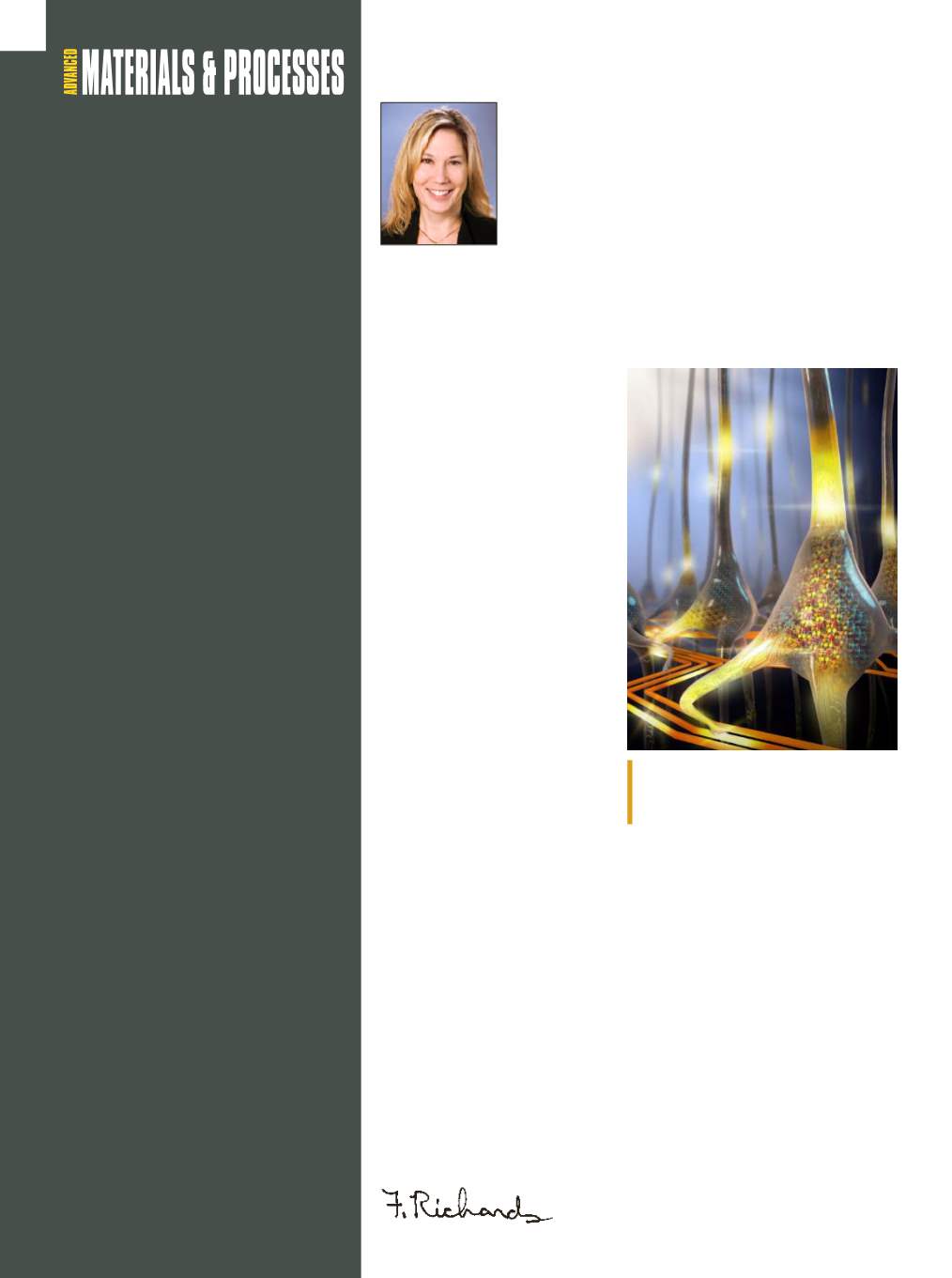

4
A D V A N C E D M A T E R I A L S & P R O C E S S E S | O C T O B E R 2 0 1 6
ASM International
9639 Kinsman Road, Materials Park, OH 44073
Tel: 440.338.5151 • Fax: 440.338.4634
Frances Richards,
Editor-in-Chief
frances.richards@asminternational.orgJulie Lucko,
Editor
julie.lucko@asminternational.orgEd Kubel and Erika Steinberg,
Contributing Editors
Jim Pallotta,
Creative Director
jim.pallotta@asminternational.orgKate Fornadel,
Layout and Design
Kelly Sukol,
Production Manager
kelly.sukol@asminternational.orgPress Release Editor
magazines@asminternational.orgEDITORIAL COMMITTEE
Jaimie Tiley,
Chair,
U.S. Air Force Research Lab
Somuri Prasad,
Vice Chair,
Sandia National Lab
Yu-Ping Yang,
Past Chair,
EWI
Ellen Cerreta,
Board Liaison,
Los Alamos
National Lab
Steven Claves,
Alcoa Technical Center
Mario Epler,
Carpenter Technology Corp.
Adam Farrow,
Los Alamos National Lab
Nia Harrison,
Ford Motor Co.
Yaakov Idell,
NIST
John Shingledecker,
EPRI
Kumar Sridharan,
University of Wisconsin
ASMBOARDOF TRUSTEES
Jon D. Tirpak,
President
William E. Frazier,
Vice President
Sunniva R. Collins,
Immediate Past President
Craig D. Clauser,
Treasurer
Ellen K. Cerreta
Kathryn Dannemann
Ryan M. Deacon
Jacqueline M. Earle
John R. Keough
Zi-Kui Liu
Sudipta Seal
Tirumalai S. Sudarshan
David B. Williams
William T. Mahoney,
Managing Director
STUDENT BOARDMEMBERS
Swetha Barkam, Allison Fraser, Rachael Stewart
Individual readers of Advanced Materials & Processes may,
without charge, make single copies of pages therefrom for per-
sonal or archival use, or may freely make such copies in such
numbers as are deemed useful for educational or research
purposes and are not for sale or resale. Permission is granted
to cite or quote fromarticles herein, provided customary
acknowledgment of the authors and source is made.
The acceptance and publication of manuscripts in Advanced
Materials & Processes does not imply that the reviewers,
editors, or publisher accept, approve, or endorse the data,
opinions, and conclusions of the authors.
T
hebest part aboutworkingona scienceandengineer-
ing publication is the incredibly diverse array of press
releases, news feeds, and video clips that pour into
my inbox 24/7. Rest assured there is no shortage of scientific
endeavors taking place around the world and elsewhere!
During the past month, two news items were especially
intriguing—and both are somewhat scary. One has to do
with dark matter and the other involves gray matter.
Dark matter is defined as being an unidentified type
of matter that makes up about 27% of the mass and energy of the universe not
accounted for by ordinary matter, neutrinos or dark energy. It is also invisible
because it doesn’t emit or interact with electromagnetic radiation. On August
25, astronomers reported that the
Dragonfly 44 galaxy—an
ultra dif-
fuse galaxy
with the same mass as
our dear Milky Way—may be almost
entirely comprised of dark matter.
Dragonfly 44 appears to have no
stars and does not exhibit a tra-
ditional galactic structure. Now,
numerous experiments are under-
way to detect dark matter particles
through nongravitational methods.
Just imagine the unusual material
properties these particles could
have once they are understood,
and the impact this would have on
materials science and engineering
as we know it. I think this is fasci-
nating to ponder, but not as daunt-
ing as the potential implications of
developing artificial gray matter.
Although I have not yet seen
it referred to as “gray matter,” new
results coming out of IBM Research
in Switzerland seem mighty close
to making the leap from materials research to actual artificial intelligence. (See
p. 12). IBM scientists, inspired by how the human brain works, are using phase-
change materials to create “randomly spiking artificial neurons” to pave the way
to faster cognitive computing and improved analysis of big data. These neurons
can perform “unsupervised learning at high speeds using very little energy” and
they don’t need coffee, bathroom breaks, sleep, or any HR benefits. I don’t know
about you, but I wasn’t too worried about being replaced by a robot that handles
manual labor tasks. But now that artificial intelligence is becoming closer to real-
ity in a step-by-step fashion, it may be time for all of us to worry. I don’t mean to
sound alarmist, but as machines get better and smarter all the time, we do need
to think about what humanity brings to the table in terms of employment skills.
One thing we can to do stay current and involved in our industries is to
attend trade shows, learn about state-of-the-art research and best practices,
and network with others in our fields to collaborate. To that end, we hope to
see many of you in Salt Lake City later this month at MS&T16! And if you have
thoughts to share on the dark or gray matters, we’d love to hear from you.
frances.richards@asminternational.orgSERIOUS MATTERS
Artistic rendering of a population of sto-
chastic phase-change neurons. Courtesy
of IBM Research.
















